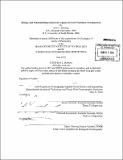| dc.contributor.advisor | Karen Casciotti and Elizabeth Kujawinski. | en_US |
| dc.contributor.author | Banning, Erin C. (Erin Charles) | en_US |
| dc.contributor.other | Woods Hole Oceanographic Institution. | en_US |
| dc.date.accessioned | 2010-08-31T14:47:21Z | |
| dc.date.available | 2010-08-31T14:47:21Z | |
| dc.date.copyright | 2010 | en_US |
| dc.date.issued | 2010 | en_US |
| dc.identifier.uri | http://hdl.handle.net/1721.1/57797 | |
| dc.description | Thesis (Ph. D.)--Joint Program in Oceanography/Applied Ocean Science and Engineering (Massachusetts Institute of Technology, Dept. of Biology; and the Woods Hole Oceanographic Institution), 2010. | en_US |
| dc.description | Cataloged from PDF version of thesis. | en_US |
| dc.description | Includes bibliographical references (p. 147-160). | en_US |
| dc.description.abstract | Predatory bacteria are ubiquitous in aquatic environments and may be important players in the ecology and biogeochemistry of microbial communities. Three novel strains belonging to two genera of marine flavobacteria, Olleya and Tenacibaculum, were cultured from coastal sediments and found to be predatory on other bacteria on surfaces. Two published species of the genus Tenacibaculum were also observed to grow by lysis of prey bacteria, raising the possibility that predation may be a widespread lifestyle amongst marine flavobacteria, which are diverse and abundant in a variety of marine environments. The marine flavobacterial clade is known to include species capable of photoheterotrophy, scavenging of polymeric organic substances, pathogenesis on animals, the degradation and lysis of phytoplankton blooms and, now, predation on bacterial communities. Strains from the two genera were found to exhibit divergent prey specificities and growth yields when growing predatorily. Olleya sp. predatory cells accumulated to an order of magnitude greater cell densities than Tenacibaculum sp. cells on equivalent prey cell densities. Experiments were conducted to constrain the potential of the novel isolates to affect prey communities under more environmentally relevant conditions. An investigation of the minimum number of predatory cells needed to generate clearings of prey cells found that the inoculation of individual predatory flavobacteria cells can ultimately result in dense lytic swarms. In some cases, the susceptibility of particular prey species to lysis by a flavobacterial predator was found to vary based on the growth state of the prey cells or the presence of their spent growth media. A novel methodology for the experimental study of biofilms was used to assess the impact of exposure to predatory marine flavobacteria on the release of macronutrients from prey biofilms. The Olleya sp. predator had a stimulative effect on macronutrient release while the Tenacibaculum sp. did not, further suggesting the two groups of predators are adapted to different ecological niches. | en_US |
| dc.description.statementofresponsibility | by Erin C. Banning. | en_US |
| dc.format.extent | 160 p. | en_US |
| dc.language.iso | eng | en_US |
| dc.publisher | Massachusetts Institute of Technology | en_US |
| dc.rights | M.I.T. theses are protected by
copyright. They may be viewed from this source for any purpose, but
reproduction or distribution in any format is prohibited without written
permission. See provided URL for inquiries about permission. | en_US |
| dc.rights.uri | http://dspace.mit.edu/handle/1721.1/7582 | en_US |
| dc.subject | Joint Program in Oceanography/Applied Ocean Science and Engineering. | en_US |
| dc.subject | Biology. | en_US |
| dc.subject | Woods Hole Oceanographic Institution. | en_US |
| dc.subject.lcsh | Predation (Biology) | en_US |
| dc.subject.lcsh | Marine bacteria | en_US |
| dc.title | Biology and potential biogeochemical impacts of novel predatory flavobacteria | en_US |
| dc.type | Thesis | en_US |
| dc.description.degree | Ph.D. | en_US |
| dc.contributor.department | Joint Program in Oceanography/Applied Ocean Science and Engineering | en_US |
| dc.contributor.department | Woods Hole Oceanographic Institution | en_US |
| dc.contributor.department | Massachusetts Institute of Technology. Department of Biology | |
| dc.identifier.oclc | 654107169 | en_US |
